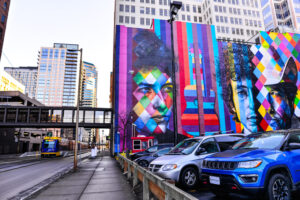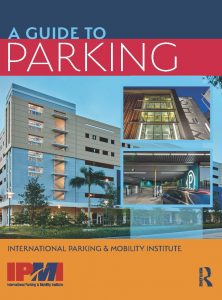 By Perry Eggleston, CAPP, DPA
By Perry Eggleston, CAPP, DPA
Rahm Emanuel said, “You never let a serious crisis go to waste. And what I mean by that it’s an opportunity to do things you think you could not do before.”
I started as executive director of UC Davis Transportation Services on January 2, 2020, and while I was still learning my way around the campus, the COVID crisis struck. The industry suddenly faced unprecedented difficulties that challenged the most senior mobility experts.
March 16 came and suddenly, there were discussions of campus closures, distance learning, and teleworking. Until that time, telework was a wish for many in the transportation industry but not considered plausible due to supervisor and management reluctance. Within a week, these discussions made campus-wide telework a reality. When this COVID thing lasted longer than a few weeks, the campus started to look at how we could use the lull to continue the momentum of flexible work arrangements (FWA–the term our campus now uses for telework and compressed work schedules), and our department pushed the campus to continue planning using them past the pandemic.
To address all the issues for making FWA an ongoing TDM strategy, I am co-chairing a university committee: “Reimagining the Workplace.” Stakeholders from human resources, technology, planning, safety and ergonomics, employee/union relations, communications, legal, and finance are all involved. The committee has already identified several advantages to FWA: recruiting the best talent, employee well-being, more campus space for students, and reducing traffic congestion and air pollution. However, there are challenges to be overcome to arrive at the advantages.
Join Ramon Zavala and me April 21 when we host the IPMI webinar, Teleworking: An Alternate Mobility Mode. We will look at what institutions should consider when creating their own FWA program and planning lessons learned.
Perry Eggleston, CAPP, DPA, is executive director, transportation services, at UC Davis. He and Ramon Zavala, the university’s transportation demand manager, will present on this topic during an IPMI webinar, April 21. Click here for details and to register.
 Citing sustainability goals and the potential for design flexibility, the Minneapolis, Minn., City Council voted unanimously Friday to end required parking minimums for new development in the city. The measure also increased minimums for bicycle parking and requires many new buildings, including residential, to incorporate transportation demand management (TDM) strategies in their development.
Citing sustainability goals and the potential for design flexibility, the Minneapolis, Minn., City Council voted unanimously Friday to end required parking minimums for new development in the city. The measure also increased minimums for bicycle parking and requires many new buildings, including residential, to incorporate transportation demand management (TDM) strategies in their development.
 The face of commuting has changed drastically since the start of the COVID-19 pandemic last March. Hesitancy toward transportation modes that put us close together with strangers in an enclosed space, a huge increase in working from home where possible, and even lower gas prices (for a time) have seen people reconsider the way they get from home to work and play. So what does that mean for transportation demand management (TDM)?
The face of commuting has changed drastically since the start of the COVID-19 pandemic last March. Hesitancy toward transportation modes that put us close together with strangers in an enclosed space, a huge increase in working from home where possible, and even lower gas prices (for a time) have seen people reconsider the way they get from home to work and play. So what does that mean for transportation demand management (TDM)? By Perry Eggleston, CAPP, DPA
By Perry Eggleston, CAPP, DPA TDM–transportation demand management–is a concerted effort to get people to choose alternates to single-occupant vehicles (SOVs), including transit, micro-mobility, and shared rides, to get from place to place. When COVID-19 made social distancing a trend, TDM took a big hit. And now, with several vaccines in use around the world and a return to semi-normal living in sight, experts and leaders are planning for TDM’s recovery and seeing opportunity post-pandemic.
TDM–transportation demand management–is a concerted effort to get people to choose alternates to single-occupant vehicles (SOVs), including transit, micro-mobility, and shared rides, to get from place to place. When COVID-19 made social distancing a trend, TDM took a big hit. And now, with several vaccines in use around the world and a return to semi-normal living in sight, experts and leaders are planning for TDM’s recovery and seeing opportunity post-pandemic. By Perry Eggleston, CAPP, DPA
By Perry Eggleston, CAPP, DPA